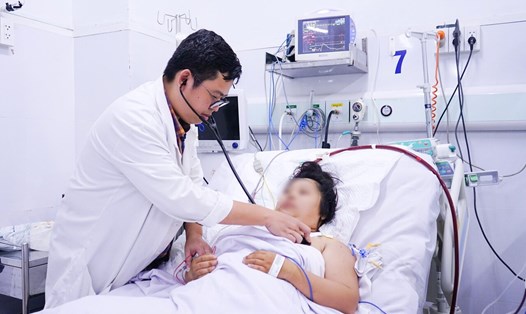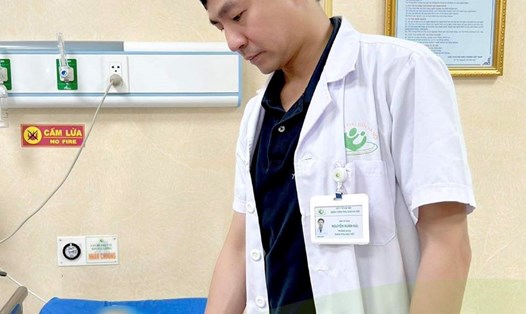On March 10, Tu Du Hospital informed the unit that it had coordinated with Cho Ray Hospital to successfully perform a semi- infirm pregnancy for Ms. T (36 years old, Binh Duong province) with complex heart disease including atherosclerosis, deliriasis, heart failure, and hypoplasia, and had not ruled out a rapid heart attack on the wall. The baby girl weighed 2.6 kg and was born healthy.
Exploiting her medical history, Ms. T gave birth naturally once in 2019. This time, Ms. T was pregnant naturally and had multiple check-ups locally as scheduled.
At 32 weeks and 34 days of pregnancy, Ms. T went for a regular pregnancy check-up, did not have difficulty breathing, and was not tired. After carefulness, Ms. T felt a slight chest drum beat, so the obstetrician and gynecologist suggested a cardiologist examination at end-line hospitals.
Coming to Tu Du Hospital for examination, ECG measurement results were too fast, inviting a consultation with the cardiologist at Cho Ray Hospital. Ms. T was allowed to go home and take prescription drugs, however, she did not see any improvement in her chest drumstick and shortness of breath.
After that, the pregnant woman went to Cho Ray Hospital for examination and recorded that the pregnant woman had a rapid heartbeat on the wall, 2/34 leaf valve opening, overflow of the perictory coronary artery, left amputation, accompanied by frostbite - frostbite - congenital heart disease. Ms. T was given cardiac supplements, stabilized her heart rate and advised to be admitted to Tu Du hospital to terminate the pregnancy.
On the same day, at Tu Du Hospital, Ms. T was transferred to the resuscitation area for close monitoring. After consultation between the two hospitals, Ms. T was treated with rapid heart rate cutting medicine with 6 mg of Adenosine, injected with a quick vein.
After 10 minutes, without seeing results, the cardiologist during the drug injection saw an additional condition of blistering secondary artery blockage, and blood pressure decreased slightly. The doctors decided to conduct an electric shock. However, the 5th electric shock with the maximum power of the 360J phone still had no results.
After careful consideration, the doctors decided to perform an extra- Thick Nose Session to perform cesarean section. After 10 minutes, the baby girl was born.
After transferring Ms. T to resuscitation, the blood circulation was still fast, the doctors decided to give her a 6th electrocution with an energy level of 150J but the results still did not improve. The 7th shock with an energy level of 200J, after 10 minutes, the circuit decreased, but still did not achieve the expected results. However, the doctors decided to stop the electrocution and continue treating and controlling the mach with Amiodaron.
After 3 hours of surgery, the pulse decreased to 150 beats/minute. After 5 hours, the pulse decreased to 130 beats/minute and the dose of Amiodaron was also gradually reduced.
After surgery 1 day, the patient's general condition improved, the surgical wound was dry, and there was not much pain. The discharge gradually decreased to 120 - 130 beats/minute, she was healthy, well-educated, and had stable obstetrics and gynecology, so she decided to transfer Ms. T to Cho Ray Hospital. Determined this to be a case of complex and persistent arrhythmia, the patient was treated with a heart rate transfer by high- frequency electrocardiogram combustion.
After a stable surgery for 24 - 48 hours, Ms. T will be transferred back to Tu Du Hospital for further post-operative monitoring and 1-2 days of labor. It is expected that Ms. T and the baby will be discharged from the hospital in the near future.




